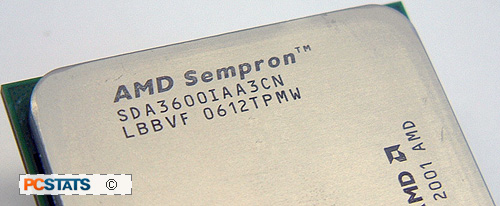Finding a new computer can be a confusing
process if you're not techno-literate. Like anything that makes you toss your
hands up in the air and curse, it's always a good idea to break it up into
little pieces, and start small. The first step is to identify what your computer
needs are, and roughly how much you're willing to spend.
Once you have
a general idea on those two fronts, the next decision is
whether to get a PC that suits you from a large vendor like Dell, a local computer
store or even try building it yourself. All three are valid routes, but if you
are technically inclined, building a computer from scratch is a fun way to ensure
you get exactly what you want.
For example, if you already have a computer case and some
working hard drives kicking around, building your own computer will let you
substitute that hardware in place of new parts you would otherwise need to
purchase. End result, you save money. If you go to Dell, this kind of
customization just isn't an option.
Over the next couple pages PCSTATS will be highlighting
a collection of computer parts we've chosen from hardware we've actually tested.
PCSTATS will build an entry level budget computer system that costs very
little, but handles moderate PC tasks well. This computer can
be used for homework, light office applications, perhaps some moderate gaming, surfing
the web, writing email, and just about anything an average user will
encounter. The only difference between the PC hardware we've put together here, and
a top of the line flagship computer costing significantly more is that we've
cut
the right corners. Instead of
using just released computer hardware, we'll choose mainstream components that
have been around for a while and are known to perform reasonably well. Rather
than picking $1000 CPUs, we'll choose a cheap mainstream processor that's great for its
class.
Our goal is to avoid the junk, and zero in on the affordable
feature-packed computer hardware that offers a lot of bang for the buck. We've
sifted through thousands of PC components and put together a budget PC which you
can use as a template to assemble your own super affordable computer system. So,
consider this article the framework for what you can do with the PC hardware out
right now, and in the future. There is no denying that models change
rapidly, but if you apply the approach we've taken you can shop smart on even
the smallest budget.
The First Step in Building a
Computer
The first thing you should do before buying any computer
parts, or a PC system for that matter, is figure out what your needs are. What
will you be using this new computer for? Who will be using it most of the time?
If there is a particular software program you work with, if so what are its
minimum hardware requirements? Think about those questions for a moment...
answers ready? Good let's begin!
Most students, for example, tend to use their computers PC's
for work like writing essays, doing up reports, researching on the internet,
and writing emails. An internet connection is a very necessary requirement
so they can social network via MSN, Facebook and Myspace, listen to music
online and surf the web. Applications that fall into any one of these points
are pretty light on the hardware requirements though, so you absolutely do not
need to blow a lot of money on a fancy computer.
All work and no play makes Bill a dull boy (and Jill a dull
girl), so heed our advice and shop carefully! With a little careful technology
planning it's easy to pick out a motherboard that will let you play
DVDs on a nearby TV, listen to music over a 7.1 channel sound system,
and avoid buying peripherals like a network card, firewire, or even
videocard.
PCSTATS has already covered all the bases of building a PC from scratch in the illustrated
Beginners Guide to Assembling Your Own PC. For the
purposes of brevity,
we're going to skip all the nitty gritty of how to actually put a computer
together in this
article. That Guide handles those questions in a clear and concise manner. If you want
guidance on building your PC, be sure to flip through that PCSTATS' Guide - you'll learn everything you need to
know there.
Now, on with the cheap computer build!
Step Two, Find the Best
Computer Hardware Within Your Budget
Let's start with the processor and motherboard
since they are the backbone of any computer. After this we'll move onto
memory, videocard, hard drive and other peripherals. For the purposes of this
article we're going to limit ourselves to just the computer hardware going into the
PC case.
 Computer hardware affects the total
cost and final capabilities of a PC the most. You will need to sort out things
like the monitor, keyboard/mouse, and the case too.
Computer hardware affects the total
cost and final capabilities of a PC the most. You will need to sort out things
like the monitor, keyboard/mouse, and the case too.
If you're lucky you can borrow or reuse most of these parts.
For the operating system we're going to stick with Microsoft Windows XP, and
I'll explain why in just a moment. Software can be expensive, buy
with web applications like Google Desktop you can get a lot of
the functionality needed in a modern PC for naught.
Picking a Computer
Processor
There are a lot of very attractive processors to choose
from right now, each with different clock speeds and some with multiple
processing cores. Best of all, prices are constantly being slashed. PCSTATS is going
to pick an inexpensive AMD Sempron single-core processor (socket
AM2) for this article, for a couple of reasons.
For starters it offers consumers greater value
for money than Intel's Celeron D CPU. There is a broader
range of inexpensive feature-packed motherboards to support socket AM2, and
it's easy on the power draw. Save the environment by thinking green! Right!? We could
just as easily opt for an Intel Core 2 Duo based processor, but integrated
motherboards on the Intel socket 775 front are a little more restricted when it comes to
features on the cheap.
| AMD Socket AM2 Entry Level
& Mainstream Processors |
| Socket AM2 Processors |
Standard Efficiency |
Clock Speed |
Cache Size |
Price |
| Athlon64 4000+ |
62W |
2.6 GHz |
512KB |
$79 |
| Athlon64 3800+ |
62W |
2.4 GHz |
512KB |
$69 |
| Athlon64 3500+ |
62W |
2.2 GHz |
512KB |
$58 |
| Athlon64 3200+ |
62W |
2.0 GHz |
512KB |
$48 |
| Sempron 3800+ |
62W |
2.2 GHz |
256KB |
$53 |
 Sempron
3600+
Sempron
3600+ |
62W |
2.0 GHz |
256KB |
$42 |
| Sempron 3500+ |
62W |
2.0 GHz |
128KB |
- |
| Sempron 3400+ |
62W |
1.8 GHz |
256KB |
$37 |
| Sempron 3200+ |
62W |
1.8 GHz |
128KB |
$31 |
| Sempron 3000+ |
62W |
1.6 GHz |
256KB |
- |
|
The Sempron is an acceptable route to go, just be
sure it's the Socket AM2 version. Earlier Sempron models are based on the older
Socket 754 platform which is now completely obsolete. We're going to go with an AMD Sempron 3600+ processor however if you find that
your budget is really tight, a Sempron 3200+ or 3400+ is also a good deal. We
wouldn't recommend a Sempron 3500+, its small 128KB of L2 cache is too small for
most applications. If you want to splurge $6, the AMD Athlon 64 3200+ will net
you a nicer chip with even more L2 cache.
Now that the processor has been chosen the next decision
is what motherboard to get.

